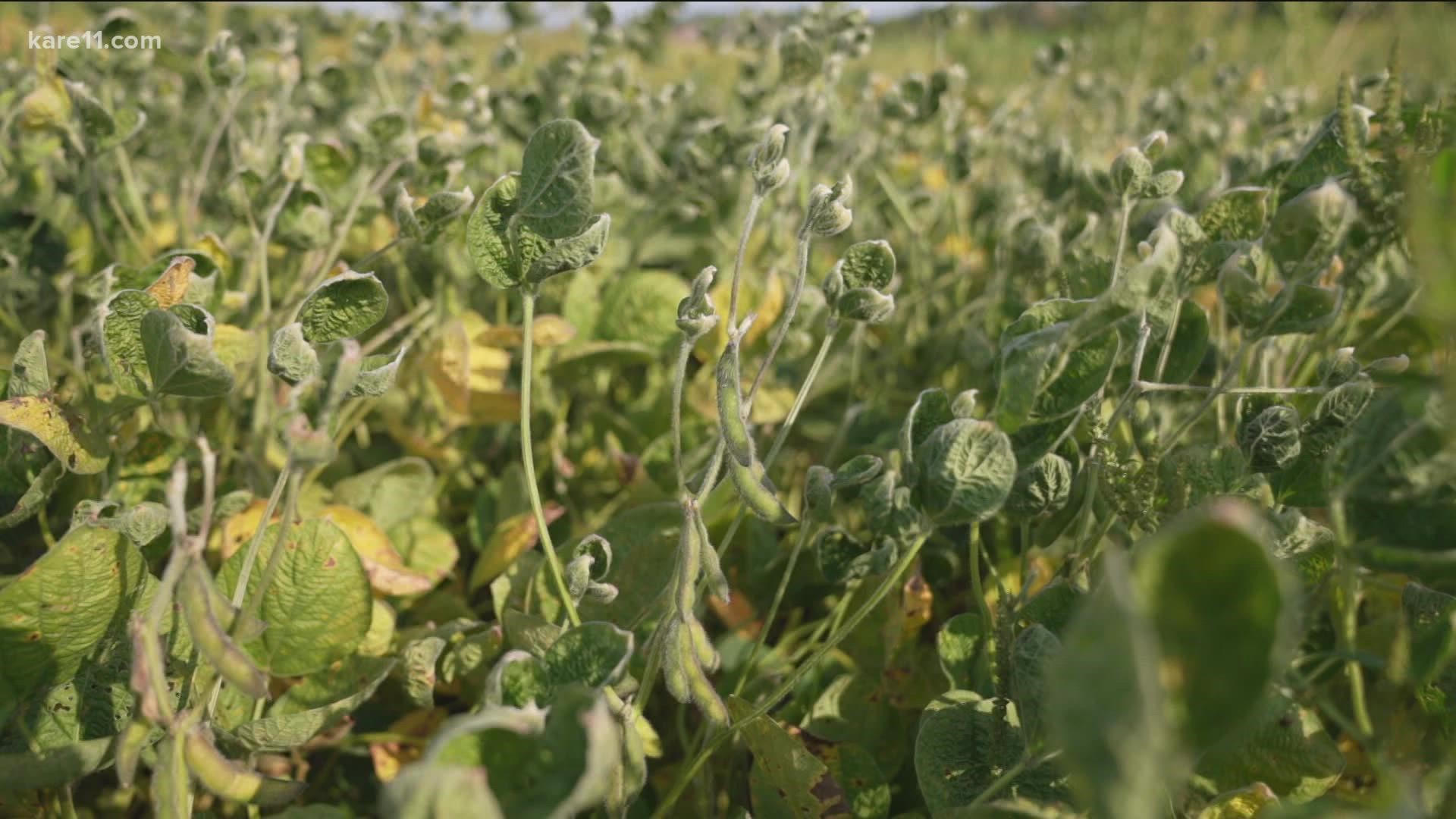CHANHASSEN, Minn. — Despite all the recent rain, the latest drought monitor shows most of Minnesota still in a moderate drought.
And now farmers, like Gayle Degler, are looking ahead to some crucial steps to turn things around next year.
Degler is ready to harvest his crops in about month - the soybeans and corn taking a hit.
"The damage or the yield potential, whatever it is, has already been established and now we’re just filling out and waiting for the harvest," said Degler. "The sun makes things grow but without the rain, they don’t mature to make the yield."
He's relying on rain this September to restore what little water is now left in the ground. Scientists at the National Weather Service call it recharging.
"Think of it as a sponge," said NWS lead forecaster Mike Griesinger. "When you get water on a sponge, you know it kind soaks into the sponge in the same way and the ground acts the same way."
Another 8 inches of rain through November would be ideal to turn around next year's growing season. But Griesinger says the first half of September looks fairly dry.
"The damage is done this year," says Griesinger. "We're looking already ahead to 2022."
He says winter precipitation is pointless because there's little liquid and frozen ground to grapple with.
"If we don't get those timely rains, there's no reserve," said Degler.
Farmers get another shot come March and April when, on average, 5 inches of rain can fall.
"That recharge is so important," says Degler. "You can get by that first year but you got to have something down in the ground for the roots to go after."
Recharging is just as important if you're not a farmer.
Rain replenishes underground aquifers that supply water to most cities.
If that dries up, crews have to dig deeper ones or tell people to cut their water usage.

